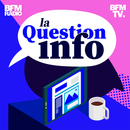This is a risk that is often not well understood by motorists: driving after taking medication can pose a certain danger depending on the substances ingested.
To raise awareness on this issue, road safety has launched a campaign in the form of interviews, from October 30 to November 29 on several radio stations: Nostalgie, Radio Classique, RFM, RTL, as well as on France radio. Red. Blue.
At the same time, “100,000 doctors will receive a note detailing all the pathologies that could affect driving and the procedure to follow in each situation,” says a statement from the Ministry of the Interior.
Pictograms in 3 levels.
Three pictograms appear on the packages of the medications in question and quickly give instructions on how to follow them. They are classified into three levels:
- Level 1, with a yellow pictogram, asks for caution and not to drive without having read the instructions, which will warn of possible effects.
- Level 2, with an orange pictogram, indicates that taking the medication may affect your ability to drive. It is necessary to consult your doctor or pharmacist before driving.
- Level 3, with the red pictogram, indicates that driving is dangerous. . Before you start driving again, consult your doctor. If it is an over-the-counter medication, consult your pharmacist.
Appearing in 2007, these pictograms have not significantly reduced the number of accidents, as expected, according to a 2016 study, which highlights the important role of health professionals in raising public awareness.
In addition, this page on the road safety site lists conditions that can affect our ability to drive, such as vision and hearing problems, diabetes or even cardiovascular pathologies.
Source: BFM TV


